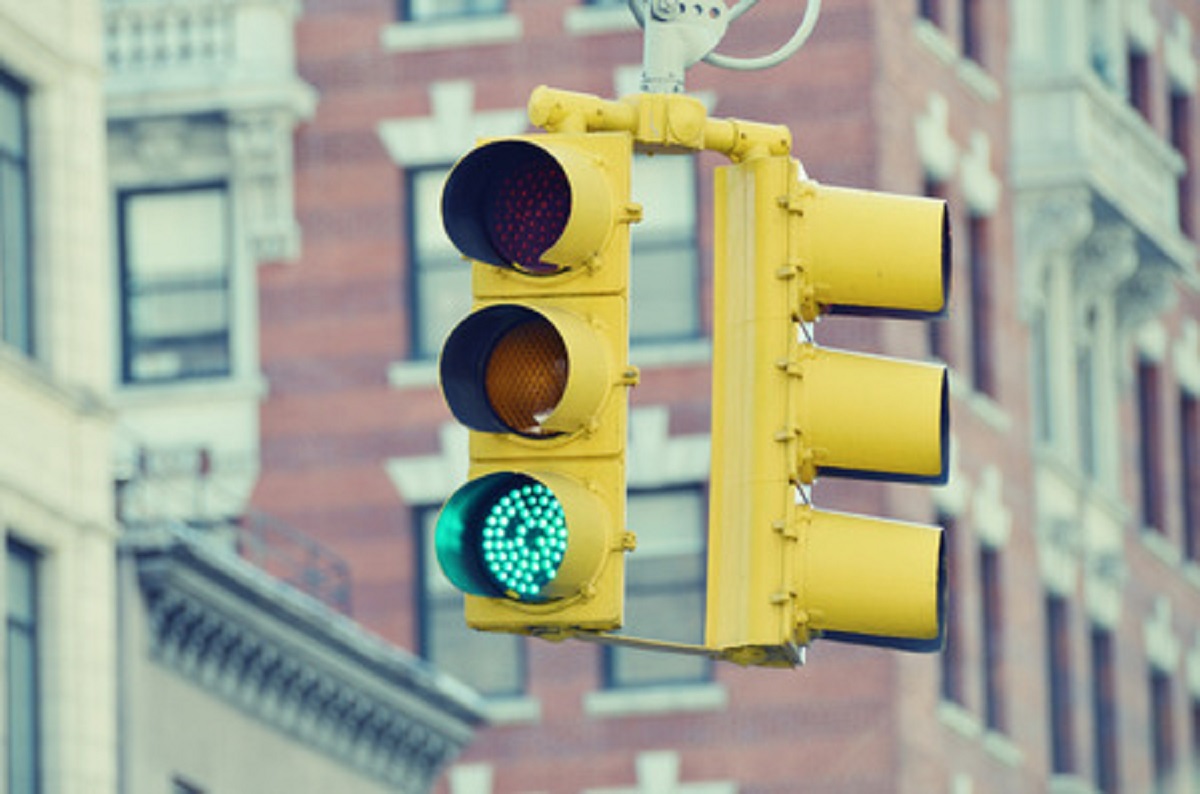For those attempting to increase their fuel efficiency or reduce stress (or both), stopping for traffic signals is typically a thorn in the side. Considering stopping/accelerating process hurts fuel efficiency—and nothing is more stressful than hitting the brakes in a hurry—it may help drivers to be able to predict signals in the midst of traffic. Admittedly, this is not a guaranteed practice—traffic signals are different between intersections, cities and towns, states, or even countries. At the same time, having an idea of how traffic lights work gives drivers some advantage in traffic, especially if they are operating their vehicles in familiar territory.
Red Good, Green Bad
This may be counter to what many think, but consider it: green lights can be very unpredictable. A light might be green right until a driver has committed to going through before it turns yellow. Basically, green lights tempt drivers to speed up toward them before forcing them to hit the brakes hard. However, when it comes to red lights, well-coordinated signals are often red as cars approach them before turning green right before or just after they arrive at the light.
Traffic Signals May Predict Other Signals
For traffic lights that spaced rather close together, drivers have an opportunity to watch the signal at their current light and perhaps the one after. Granted, drivers should only do this when it is safe to do so, such as when they are stopped at a red light. In these circumstances, a driver can get a fairly good idea what the next light is going to do once the first light changes to green.
Left Turn Signals
You can also watch the left turn signal in traffic lights for an idea of how traffic is currently operating. If there is a green light for traffic driving forward and the left turn signal light just turned green, with cars still turning, there is often enough time to go through the green light, as it is still relatively “fresh.”
If you are about to turn left yourself, and there are other cars in the turning lane waiting for the go-ahead, you could potentially time your car’s arrival so that the left turning light turns green when you get there, but this is not the most reliable method.
It should also be noted that left turn traffic signals can lead or follow the straight-through green lights, particularly with coordinated routes. Every signal has likely been phased for a specific time and day, so drivers ought to remain alert to learn what every signal does during their commute.
Think you or someone you know is in need of Behind the Wheel Training? Training Wheels is an Atlantic City driving school specializing in teaching new teen drivers how to stay safe on the road. For more information on our lessons, please click here.
Copyright: happyalex / 123RF Stock Photo

